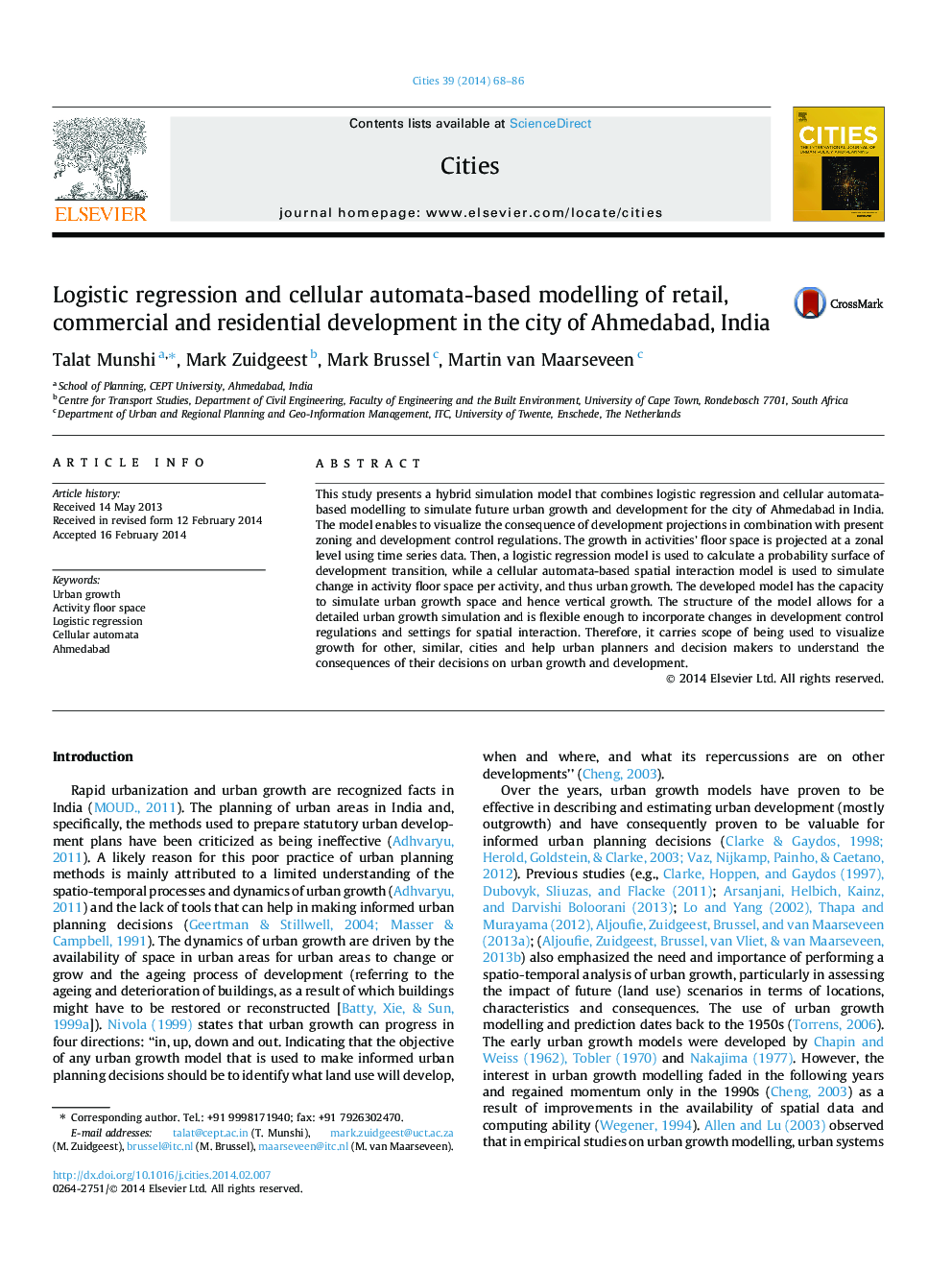| Article ID | Journal | Published Year | Pages | File Type |
|---|---|---|---|---|
| 7418741 | Cities | 2014 | 19 Pages |
Abstract
This study presents a hybrid simulation model that combines logistic regression and cellular automata-based modelling to simulate future urban growth and development for the city of Ahmedabad in India. The model enables to visualize the consequence of development projections in combination with present zoning and development control regulations. The growth in activities' floor space is projected at a zonal level using time series data. Then, a logistic regression model is used to calculate a probability surface of development transition, while a cellular automata-based spatial interaction model is used to simulate change in activity floor space per activity, and thus urban growth. The developed model has the capacity to simulate urban growth space and hence vertical growth. The structure of the model allows for a detailed urban growth simulation and is flexible enough to incorporate changes in development control regulations and settings for spatial interaction. Therefore, it carries scope of being used to visualize growth for other, similar, cities and help urban planners and decision makers to understand the consequences of their decisions on urban growth and development.
Related Topics
Social Sciences and Humanities
Business, Management and Accounting
Tourism, Leisure and Hospitality Management
Authors
Talat Munshi, Mark Zuidgeest, Mark Brussel, Martin van Maarseveen,
